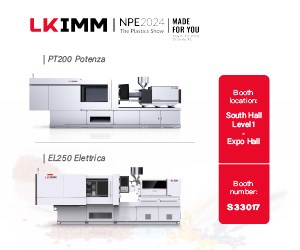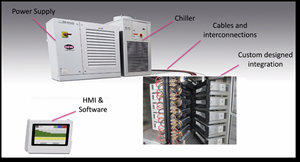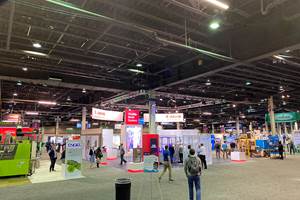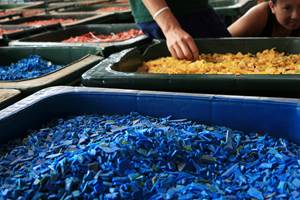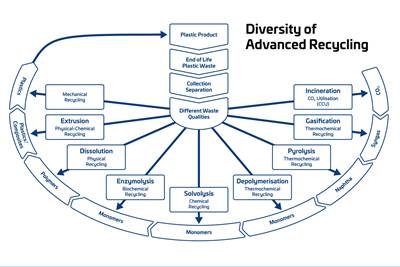Collaborative Mold Design Experiment Based on Clariant's Color Trends
Mold texture specialist and Clariant investigate interaction of social trends, color and textures.
Each year, we report on color trends for the upcoming year from a couple of the major colorant and additive suppliers, such as Americhem, Clariant and PolyOne. This year, Clariant was approached with an interesting challenge by Pel Plastic srl, an Italian company specializing in mold texturing and surface design. Inspired by Clariant’s color trend forecasting tool Pel Plastic asked Clariant to experiment with a radically different approach to product design.
A typical design project typically begins with a product concept and then quickly proceeds to drawings and prototype parts, all before selection of color and texture. Key account sales manager for Pel Plastics Mirella Sala noted that in viewing Clariant’s ColorForward 2019, it saw that the color trend tool is based on research into social trends and how they could influence the way consumers respond to different colors in the future. “This is something we have been doing with textures and the idea of looking at textures and color together—so that one can support and help express the other—seemed like a very interesting project.”
In consultation with Clariant experts, the Pel Plastic team began by picking one color from each of the four ColorForward 2019 themes, and created mood boards to help them better understand the potential interaction of theme, color and texture. Here’s how the project team brought color and texture together
● The Color: The designers ultimately selected the Do Not Disturb theme and the color “focus”—a transparent light green. The Do Not Disturb theme is based on the idea that technology makes it very easy for people to become distracted. Overwhelmed by choice, consumers look for ways to consciously limit options to make decisions easier. For that reason, the color palette of this theme—including the “focus” green selected by Pel Plastic, is simple, serene, soft, and minimal.
● The Texture: Once settled on the color, the Pel Plastic team began working on the texture that would be applied to a molded plastic. The result is very much in line with the trend theme—enigmatic, somewhat contradictory and distracting, but eventually resolving itself to bullseye focal point.
The clear PC polymer and the transparent color are rendered translucent, almost opaque, by the texture. The exterior surface of the prototype—a standard shape Pel Plastic uses to evaluate textures—is absolutely smooth, while the texture is created on the inside or backside of the part. This construction creates depth and an almost pearlescent appearance, despite the fact that there are no pearl pigments in the color.
Said Sala, “Through this project, we learned that color and texture together can have a completely different effect than either one alone…We will use the results in presentations to customers so that they can also better understand the relationship between plastics, color and texture. We appreciated the collaboration with Clariant very much and we would like to continue as a partner and develop more textures with colors in the future.”
Noting that this is exactly the purpose of the existence of Clariant’s global Color Works design and technology centers and the ColorForward tool, Alessandro Pozzati, ColorWorks industrial designer said, “The collaboration with Pel Plastics shows how we can help designers, brand managers and product developers to better understand and appreciate how color—and, in the case, texture too—can move people and even influence their purchasing decisions.”
Related Content
Compatibilizers Aid Recycling & Upcycling of Mixed Resins
Compatibilizers are proving their worth in boosting critical properties such as impact/stiffness balance of PCR and PIR blends of polyolefins and other plastics.
Read MoreCrosslinking Process Promises Thinner, Higher-Performance PE Films
Technology combines UV curing system with photo initiator promoter masterbatch.
Read More3 Types of 3D Printed Tooling for Injection Molding
3D printed tooling for injection molding, including mold inserts, components and end of arm tooling, were on display at the Plastics Technology Expo.
Read MoreAt NPE2024, Follow These Megatrends in Materials and Additives
Offerings range from recycled, biobased, biodegradable and monomaterial structures that enhance recyclability to additives that are more efficient, sustainable and safer to use.
Read MoreRead Next
Advanced Recycling: Beyond Pyrolysis
Consumer-product brand owners increasingly see advanced chemical recycling as a necessary complement to mechanical recycling if they are to meet ambitious goals for a circular economy in the next decade. Dozens of technology providers are developing new technologies to overcome the limitations of existing pyrolysis methods and to commercialize various alternative approaches to chemical recycling of plastics.
Read MoreHow Polymer Melts in Single-Screw Extruders
Understanding how polymer melts in a single-screw extruder could help you optimize your screw design to eliminate defect-causing solid polymer fragments.
Read More

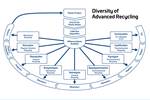


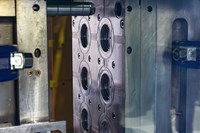
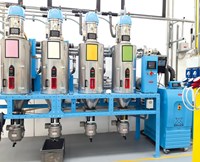

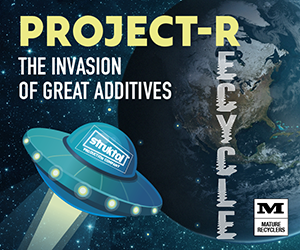





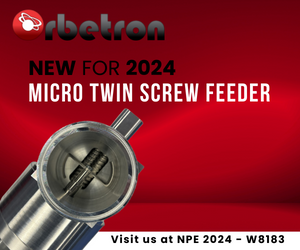

.png;maxWidth=300;quality=90)
